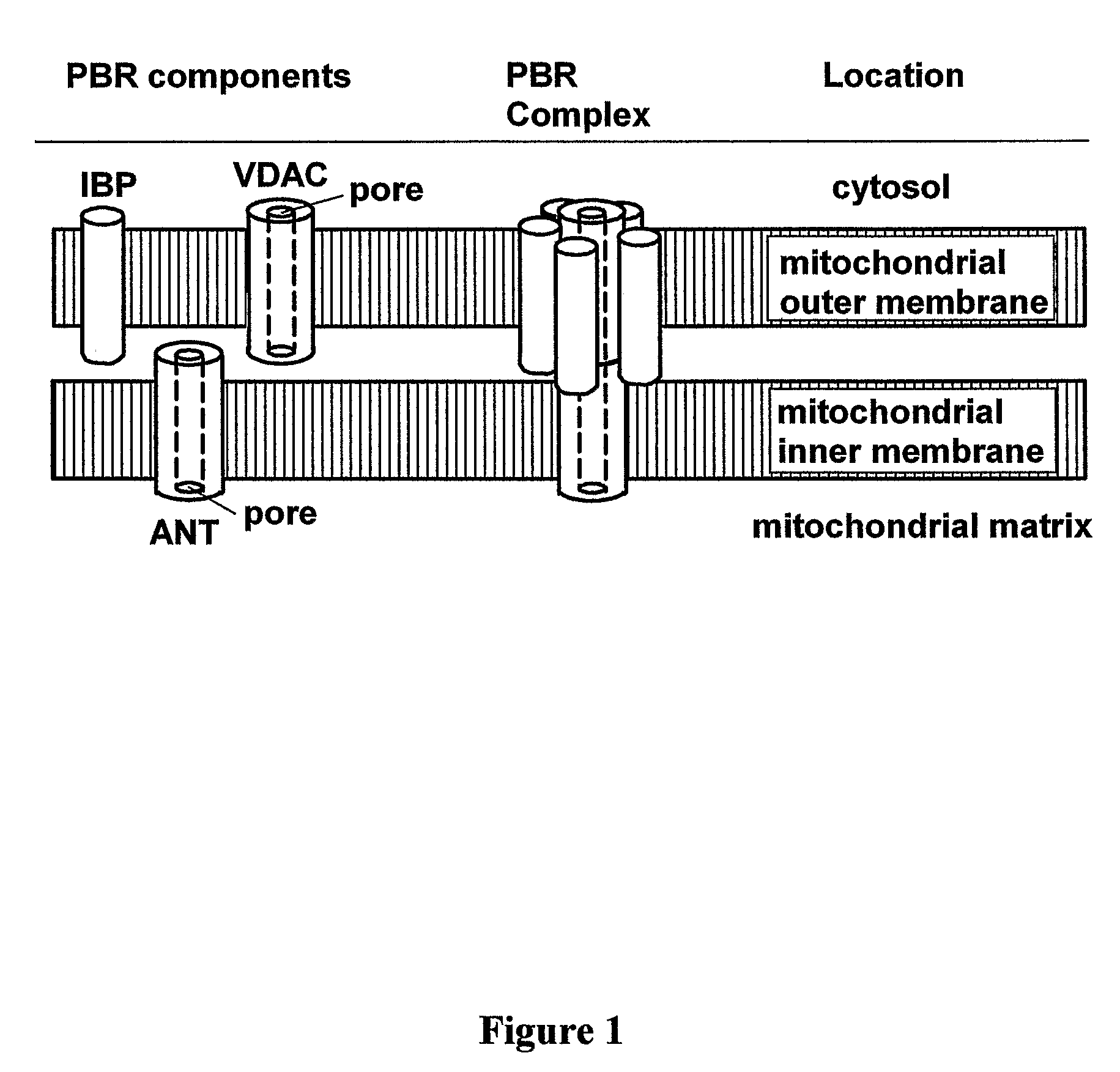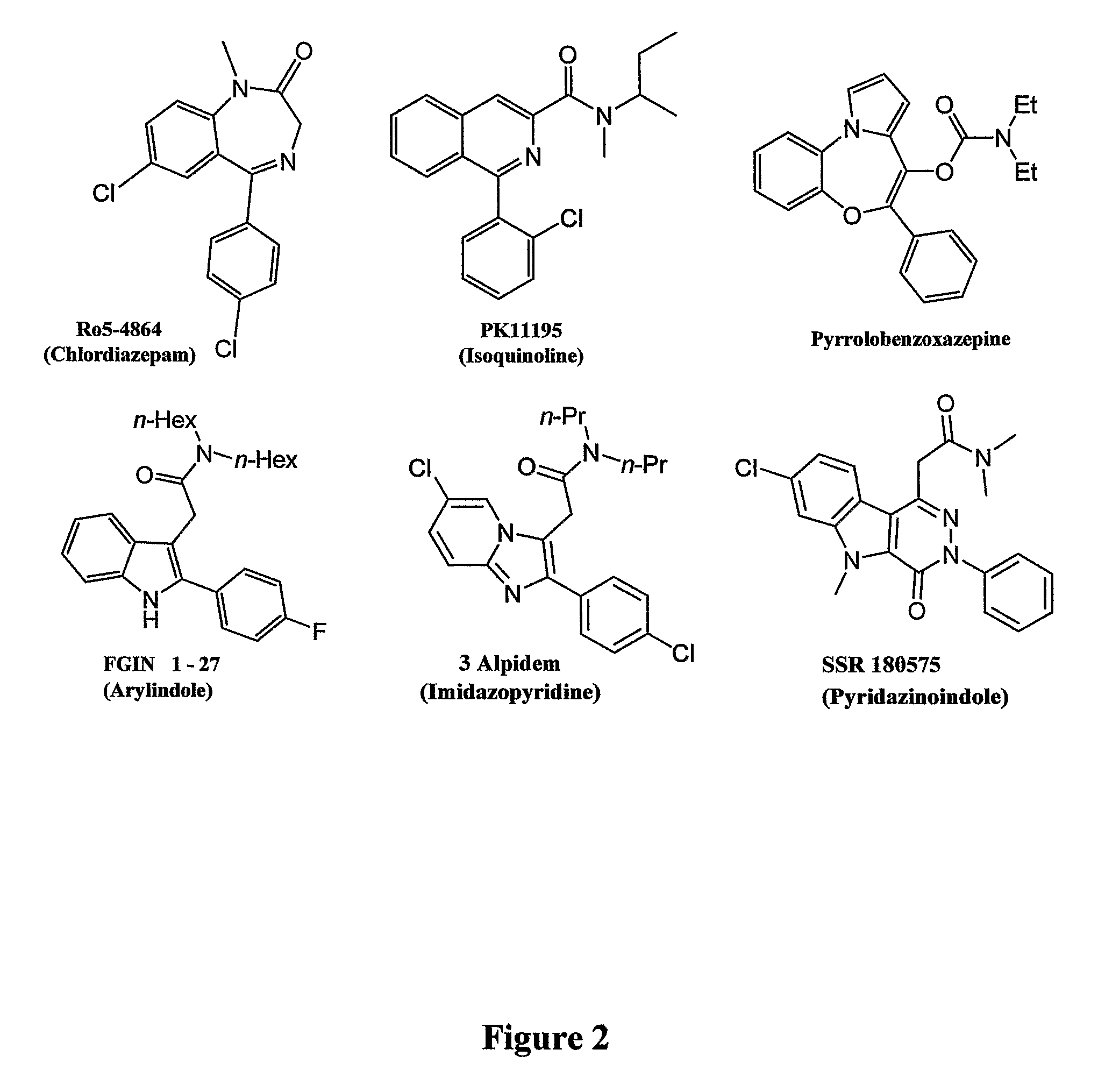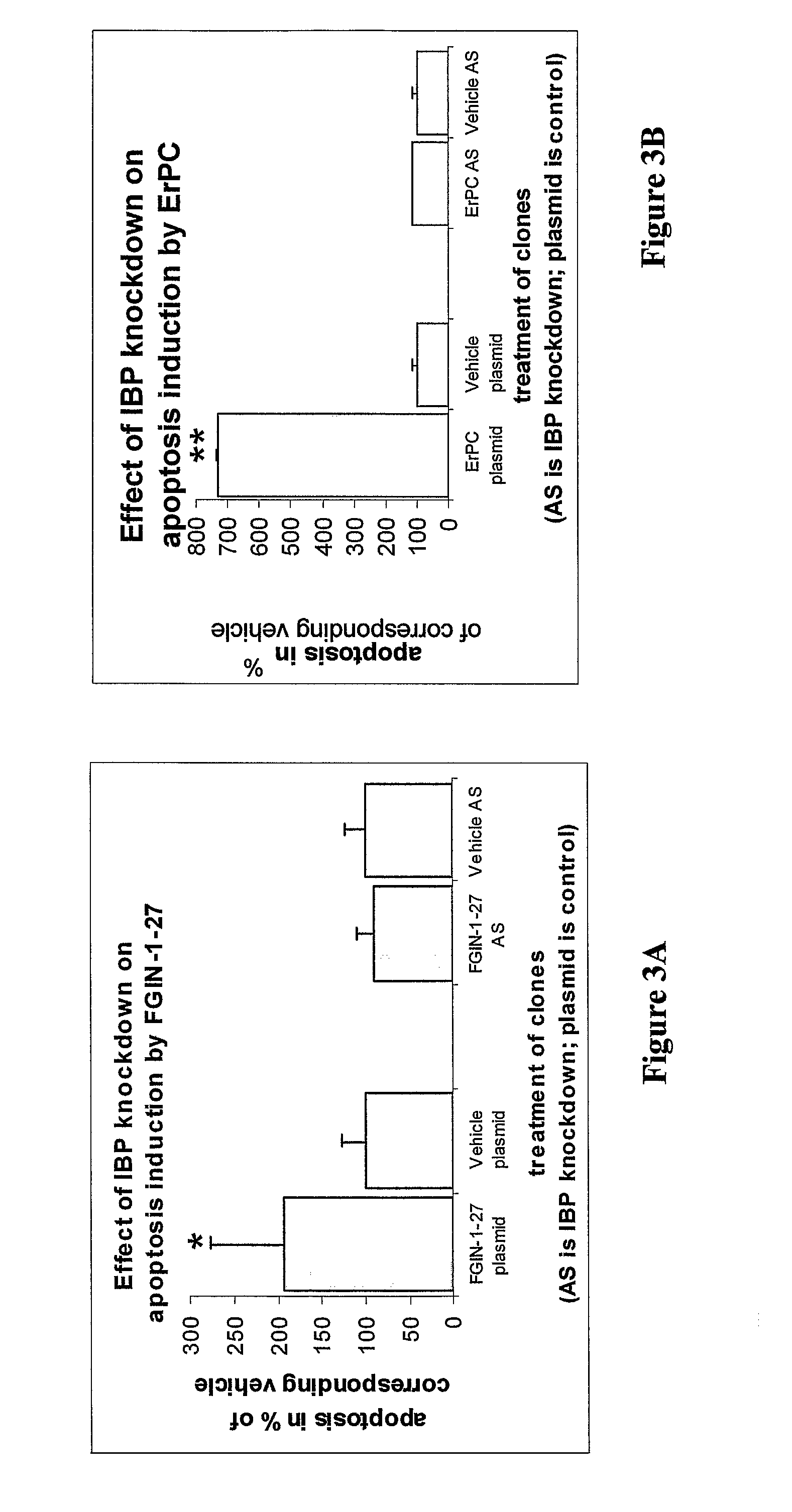Heterocyclic derivatives, pharmaceutical compositions and methods of use thereof
a technology of heterocyclic derivatives and pharmaceutical compositions, applied in the direction of biocide, plant growth regulators, animal husbandry, etc., can solve the problems of reducing the mitochondrial membrane potential, affecting the effect of apoptosis inducers, and still far from satisfactory treatment results, so as to improve the apoptosis of apoptosis inducers, treat and prevent.
- Summary
- Abstract
- Description
- Claims
- Application Information
AI Technical Summary
Benefits of technology
Problems solved by technology
Method used
Image
Examples
example 1
Materials And Methods
[0456]Cell culture of neural cell lines Various human glial cell lines (T98G, U87MG, A172, U118), as well as human neuronal cell lines SH-SY 5Y and Be(2)-C were used to test the new compounds. The applicants also have produced modified rat C6 glial cell lines under-expressing and over-expressing various components of the PBR complex, which allows to study PBR specific effects. Human glial and neuronal cell lines under- and over-expressing components of the PBR complex, can also be used, according to methods described previously [Levin E et al. Biochemistry 2005;44:9924-9935; Kuznetsov V et al. Abstract Viewer / Itinerary Planner. Washington, D.C.: Society for Neuroscience, Online: 2005; Program No. 673.4; Weisinger G et al. Biochemistry 2004;43:12315-12321].
[0457]PBR binding and Western blot protein analysis PBR binding assays were utilized to determine whether the compounds of the invention, are able to compete with standard PBR ligands, according to methods desc...
example 2
Preparation of New Phthalazine, Quinazoline and Quinoxaline Derivatives
[0464]a. Phthalazines:
[0465]Phthalazine derivatives of formula IA were prepared as described in FIG. 8 and as further detailed in Example 4. The commercially available phthalic anhydride was reacted with N,N-dimethyl hydrazine to give 2-(dimethylamino)isoindoline-1,3-dione 16 in good yield [Hanefeld W et al. J Heterocyclic Chem. 1996;33:1443]. Then, 16 was reacted with phenylmagnesium bromide, to lead to the intermediate 17 in good yield [Deniau E et al. Tetrahedron: Asym. 2003;14:2253], which in turn was quantitatively converted by reaction with hydrazine to 4-phenylphthalazin-1(2H)-one 18 [Saito Y et al. Synthesis 2001;2:221]. Finally, the N-amidation product 19 (Compound I) was the major product obtained in good yield whatever the experimental conditions. Two different carbamoyl chlorides were used (R1=CH3—compound 19a; and i-Pr—compound 19b) for the preparation of phthalazine derivatives. (FIG. 8).
[0466]Phtha...
example 3
Results
[0486]Binding to the PBR was evaluated for all the phthalazine, quinazoline and quinoxaline derivatives of the invention with the help of [3H] PI(11195 radio-assay, as previously described (see FIG. 7).
a. Phthalazines
[0487]Results of binding to PBR for several exemplary phthalazine derivatives are presented in FIG. 20.
[0488]As can be seen from the results, one compound in particular—19b presented excellent binding to PBR: only 10% of the radioactive standard remained bound to PBR. Compound 19b, appeared to be able to displace [3H]PK 11195 in binding assays in the same range as non-radioactive PK 11195 does [Alex Shterenberg, M. Sc. thesis, 2006]. Favorably, this compound also showed anti-apoptotic effects in glial and neuronal cell cultures. In particular, compound 19b shows anti-apoptotic effects in a concentration dependent manner. Moreover, compound 19b, lacks the toxic effects at high concentrations often displayed by classical PBR ligands.
[0489]As can be seen in FIG. 24,...
PUM
| Property | Measurement | Unit |
|---|---|---|
| temperature | aaaaa | aaaaa |
| temperature | aaaaa | aaaaa |
| temperature | aaaaa | aaaaa |
Abstract
Description
Claims
Application Information
 Login to View More
Login to View More - R&D
- Intellectual Property
- Life Sciences
- Materials
- Tech Scout
- Unparalleled Data Quality
- Higher Quality Content
- 60% Fewer Hallucinations
Browse by: Latest US Patents, China's latest patents, Technical Efficacy Thesaurus, Application Domain, Technology Topic, Popular Technical Reports.
© 2025 PatSnap. All rights reserved.Legal|Privacy policy|Modern Slavery Act Transparency Statement|Sitemap|About US| Contact US: help@patsnap.com



